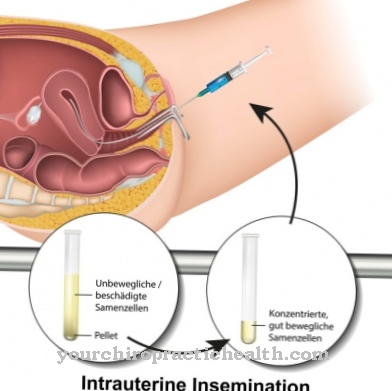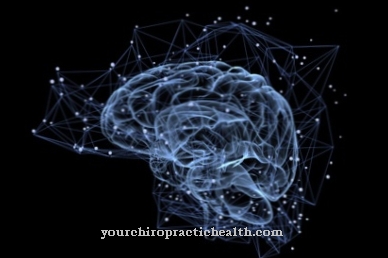As part of the prenatal diagnosis, an examination of the child in the womb, further diagnosis may be necessary. This is done by means of Fine ultrasound, a special sonographic examination that enables the doctor to investigate indications of a possible developmental disorder in the child or physical abnormalities.
What is fine ultrasound?

Regular ultrasound examinations have now become an integral part of pregnancy diagnostics and are also written down in maternity guidelines. It is different with fine ultrasound, also as Organ ultrasound, Organ screening, detailed sonographic diagnostics or Malformation ultrasound designated.
The different names already give the best indication of the objective: organs and organ structures of the unborn child are mapped with the help of this procedure and checked for irregularities or malformations. A fine ultrasound is much more detailed in its results and is carried out with a particularly high-resolution device. The examination, for which a pregnant woman has to allow around two hours, is carried out through the abdominal wall of the expectant mother, as with normal sonography.
However, only doctors specially trained on these devices, such as gynecologists and radiologists, are allowed to perform this diagnosis. Since this is a special examination, the health insurances do not readily cover the costs.Most require a gynecological report that gives a clear indication of why such an examination is necessary. A heart defect, for example, which makes an immediate operation inevitable immediately after birth and for which appropriate precautions must be taken.
Function, effect & goals
If necessary, a fine ultrasound is carried out between the 19th and 22nd week of pregnancy, in the second trimester, if, for example, an abnormality is revealed during the regular ultrasound examination.
The examination proceeds as with the usual ultrasound: contact gel is applied to the expectant mother's stomach, after which the doctor moves the transducer over the abdominal wall. The transducer sends ultrasound waves into the uterus. The returning echo enables the child's organs and organ structures to be represented. On the basis of this special examination, the experienced doctor can determine whether the child's organs are present and have developed accordingly.
Developmental disorders and physical characteristics can be identified or excluded in this way. This organ screening is recommended by gynecologists for certain indications. This includes couples who already have a sick child. If the parents have pre-existing conditions that may affect the development of a child, such as diabetes. In the case of hereditary diseases and congenital heart defects in the family. With known drug use of the expectant mother and with smokers. Or in women who have been exposed to strong radiation.
Even older pregnant women (from 34 years of age) and women who have become pregnant by means of artificial insemination are often advised to have a fine ultrasound diagnosis for safety. The main focus of such an examination is particularly directed to the development of the internal organs, the limbs, the brain, the face and the spine. With this diagnostic option, defects and malformations can be identified at an early stage. A spina bifida, an open spinal canal, becomes visible in this way. This is important because, depending on the severity of the occlusive disorder, an operation must be performed within 24 to 48 hours after the birth.
Heart defects can also be identified more easily, such as the white spots, also known as the golf ball phenomenon. These are point-like compressions that occur particularly in the left ventricle. Another focus is on the gastrointestinal tract in order not to overlook a possible intestinal obstruction. This also applies to the kidney and urinary tract in order to detect malformations or cysts in good time. The limbs of the unborn child are examined for foreshortening, special positions and multiple fingers.
During the head examination, the size is taken into account, as well as the characteristics of the brain chamber. During such an examination, it is also possible to detect a cleft lip and palate at an early stage. The aim of organ screening is a general clarification of the developmental status of the unborn child in the second trimester of pregnancy. The assessment of the ultrasound images takes place after the examination and is discussed with the parents-to-be.
What cannot be seen in fine ultrasound are chromosomal abnormalities. So-called sonographic soft markers give indications that a chromosome peculiarity could be present. In order to gain certainty, the attending physician will recommend further diagnostic measures such as an amniotic fluid test or a chorionic villus sampling. This is a test to unequivocally determine chromosomal abnormalities such as those found in Down syndrome.
Risks, side effects & dangers
The fine ultrasound examination is just as safe for the mother as it is for the unborn child, as is the normal ultrasound examination. Nothing is known of side effects either.
However, the informative value of an organ ultrasound depends on many factors. The quality of the device plays a central role. Likewise, the experience of the doctor who is carrying out the examination. The amount of amniotic fluid is also not insignificant. The smaller the liquid, the worse the sound waves are conducted. The result is influenced by the thickness of the expectant mother's abdominal wall, by scars, the position of the fetus and the week of pregnancy.
Making the correct diagnosis here requires a lot of experience and sensitivity. Therefore, it is very important that parents are educated by the doctor before such screening is carried out. Because honestly, every doctor has to make it clear to parents that no examination can unequivocally predict a healthy child. The fine ultrasound is nothing more than an auxiliary instrument that can contribute to the detection of an organic undesirable development.

























.jpg)

.jpg)
